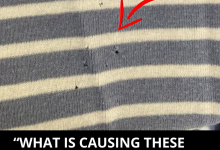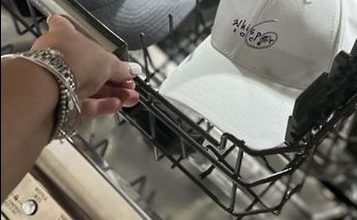By making some laundry products yourself—including detergent pods, fabric softener, and more—you’ll save money and avoid last-minute trips to the store when you run out of detergent. Plus, you’ll have the satisfaction of knowing exactly which ingredients are being used to wash your laundry.
Find out these 10 DIY laundry products that are simple and cost-effective to make.
DIY Powdered Laundry Detergent

Making powdered laundry detergent is very simple and will cost you around 30 cents per load. Plus, homemade laundry detergent is safe to use in both standard and high-efficiency washers because the formula is low-sudsing.
What You Need
- 1 5.5-ounce bar of pure soap or 1 cup of soap flakes
- 1 cup baking soda
- 1 cup washing soda (sodium carbonate)
- 1/2 cup borax
- Cheese grater
- Measuring cup
- Resealable container
Grate the Soap
Using a regular cheese grater, grate the bar of pure soap (or use 1 cup of soap flakes).
Combine the Ingredients
In a large, resealable container, combine the soap flakes, baking soda, washing soda, and borax. Mix the ingredients well. Washing soda (sodium hydroxide) is caustic to the skin, so wear rubber gloves.1
Use as Directed
Keep the detergent in the container dry. Use 1/2 cup of the mixture per a load of laundry in a standard top-load washer. Use only 2 tablespoons in a high-efficiency top or front-load washer.
Tips
- If you can’t find washing soda, you can make your own washing soda from baking soda.
- This detergent recipe can be easily doubled. Store a large batch in an airtight container, and transfer small amounts to a decorative canister to keep handy near the washer.
- To boost the cleaning power of your homemade detergent, you can slightly increase the amount of borax in the formula.
DIY Liquid Laundry Detergent

If you have extremely cold water, liquid laundry detergent is a better choice because powders can sometimes be difficult to dissolve. This formula is particularly good for anyone with sensitive skin because it contains no irritating dyes or fragrances.
What You Need
- 1 5.5-ounce bar of pure soap or 1 cup of soap flakes
- 4 cups water
- 1 cup baking soda
- 1 cup washing soda (sodium carbonate)
- 1/2 cup borax
- Cheese grater
- Measuring cup
- Saucepan
- Resealable 3-gallon container
Grate the Soap
Using a regular cheese grater, grate the bar of pure soap (or use 1 cup of soap flakes).
Melt the Soap
Add the grated soap to a large saucepan with the water. Stir continually over medium-low heat until the soap dissolves and is melted.
Combine the Ingredients
In a large, resealable container, combine the melted soap flakes, baking soda, washing soda, borax, and hot water. Washing soda is caustic to the skin, so you should wear rubber gloves.1
Allow the Detergent to Thicken
Stir the detergent mixture until everything is dissolved. Cover and allow it to sit overnight to thicken.
Use as Directed
Use 2 tablespoons of your homemade liquid detergent per load. This is appropriate for both high-efficiency washers and standard top-load washers. Shake well before each use.
Tips
- A glass beverage dispenser, such as those used for iced tea or lemonade, makes a decorative container for your liquid detergent. It is easy to dispense and refill.
DIY Single-Dose Laundry Detergent Pods

The single-dose laundry detergent format—whether a tablet, pod, or pack—is a simple and efficient way to prevent the overuse of detergent. This saves money, protects clothes from excessive wear, and can even keep high-efficiency washers from breaking down due to excess suds. One of the downsides of single-dose pods from big-name manufacturers is the high cost, but you can make your own for less.
What You Need
- 1/2 cups washing soda to soften water1/2 cup pure soap flakes for stain removal
- 2 tablespoons Epsom salt for fabric softening
- 3 tablespoons hydrogen peroxide (3.5 percent pharmaceutical grade) for whitening and brightening fabrics
- 1/4 cup distilled white vinegar for odor reduction
- 15 to 20 drops essential oil for fragrance (optional)
- Mixing bowl (glass or plastic)
- Hand grater
- Sheet pan or cookie sheet
- Waxed paper or parchment paper
- Measuring spoons
Grate the Soap
Using the hand grater, grate a bar of pure soap until you have 1/2 cup of grated soap. You can also purchase soap flakes if you don’t want to use the grater.
Combine the Dry Ingredients
Pour the soap flakes into the mixing bowl. Add the washing soda and Epsom salts next. Stir these ingredients together until blended.
Add the Wet IngredientsAdd the hydrogen peroxide, vinegar, and essential oil (if you’re using it). After you have added the wet ingredients, your mixture should look like wet sand.
Shape Into Pods
Use a measuring spoon to shape the mixture into individual pods. Each pod should be 1 heaping tablespoon. Pack the measuring spoon well, and then place the pod on a waxed paper- or parchment paper-lined cookie sheet. Spritz the pods with a bit of plain water to set the shape, and allow them to dry overnight. This recipe will make around 24 single-dose pods.
Store the Pods
Once the pods are completely dry (this could take longer than overnight if you live in a humid environment), store them in an airtight container.
Tips
- Each homemade detergent pod will wash an average-size laundry load. They can be used in both standard and high-efficiency washers. If you have a large load, add two pods.
- Place the pods in the drum of the washer before adding water and loading clothes. This will give them the maximum exposure time to water, so they will dissolve correctly and thoroughly.
- As with commercially manufactured single-dose products, be sure to keep these away from children. It is essential to label them properly, so they are not mistaken as food.
DIY Gentle Wool Wash

For wool to look its best, it should not be treated with high heat or harsh detergents. Mistreatment can cause wool to lose its natural oils and luster, change shape, or develop wear and tear prematurely. There are commercial detergents formulated for delicate garments, such as wool sweaters, but you can also make your own.
What You Need
- 4 cups pure soap flakes
- 4 cups boiling water
- 1 cup denatured alcohol
- 1 tablespoon essential oil for fragrance (optional)
- Large glass or plastic mixing bowl
- Whisk or stick blender
- Large resealable storage container
Melt the Soap Flakes
Place the soap flakes and boiling water in a large mixing bowl, and mix well with the stick blender or whisk. Or you can do this in an electric blender.
Add the Denatured Alcohol
Add the denatured alcohol (and essential oil if you’re using it) and mix well.
Let the Mixture Set
Pour the mixture into the resealable container. Leave the container overnight for the mixture to set to a firm jelly.
Tips
- To use, rub a small amount into stains. Or dissolve 1 tablespoon of wool wash in lukewarm water. Swish or soak the garment in warm water, and then rinse well.
DIY Laundry Bleach Pen

Chlorine bleach is not the best choice for removing stains on colored clothes, though it does work well on white cotton. But what if you have a striped shirt? How do you keep the bleach on just the white area? You can purchase a commercially made bleach pen or make your own.
What You Need
- 3/4 cup water
- 3 tablespoons corn starch (thickener)
- 4 to 7 tablespoons chlorine bleach
- Small saucepan
- Small plastic squirt bottle with a pointed tip
- Label
Dissolve the Corn Starch
In a small saucepan, mix the water and corn starch together until the starch is dissolved.
Boil the Mixture
Bring the mixture to a boil, stirring continuously until it becomes translucent and pudding-like. Then, let it cool completely.
Add Bleach
Add bleach by the tablespoon until you have the consistency and strength you desire. The gel will thin a bit.
Fill a Squirt Bottle
Place the mixture in a clean, empty squirt bottle, and clearly label it.
Tips
- Make the mixture in small batches. The product will lose potency after three months.
- This bleach solution can be used to create designs on colored fabrics.
DIY Laundry Fragrance Enhancer

Advertisers have convinced most of us that unless our laundry smells “clean,” then it isn’t. But what is the smell of clean? Meadow fresh, spring rain, or aloha ocean? If you want to control the fragrance of your laundry but don’t like the expense or the added chemicals of commercial brands, you can make your own laundry fragrance enhancer.
What You Need
- 1 cup Epsom salt (magnesium sulfate)
- Essential oil(s) in scents of your choice
- Resealable plastic storage container
Mix the Epsom Salt and Essential Oil
Add roughly 10 drops of essential oil to a cup of Epsom salt. You can add more or less essential oil, depending on the level of fragrance you want.
Stir and Store
Stir the oil into the salt well, and store it in an airtight container.
Tips
- Add 1/4 cup of the scented salt to the washer along with your laundry detergent. Add it directly into the washer drum; do not use an automatic dispenser.
- The mix is safe to use in both standard and high-efficiency washers.
- As with any cleaning product, label your scented salt and store it away from children.
- This laundry fragrance enhancer makes a great gift. Present it in a pretty container with a coordinated measuring scoop. Be sure to include instructions and perhaps the recipe.
DIY Laundry Fabric Softener

Homemade fabric softener is easy to make, inexpensive, and the perfect complement to homemade laundry detergent. It’s also a great choice for those with chemical sensitivity to perfumes and dyes, and it’s safe to use on all fabrics.
What You Need
1/2 cup baking soda
4 cups water
3 cups distilled white vinegar
5 to 10 drops of essential oil in your favorite scent (optional)
A gallon or larger plastic jug
Measure the Baking Soda
Pour the baking soda into your jug.
Mix in the Water
Add 1 cup water to the jug, and stir to dissolve the baking soda. Then, add the remaining 3 cups of water.
Add the Vinegar
Slowly add the distilled white vinegar. Do not pour quickly, or the baking soda and vinegar can react and fizz out of the bottle.
Add Essential Oil (Optional)
If you would like, add your favorite essential oil for fragrance.
Tips
- This product is safe for both standard and high-efficiency washers.
- Add the mixture directly to the washer’s fabric softener dispenser. You can also add it manually to the final rinse cycle. Use about 1/2 cup per load.
DIY Laundry Starch and Sizing

A freshly ironed shirt presents a crisp, polished look, and using starch or sizing will help accomplish that look. Starch gives the fabric an extra body and leaves a smooth finish. Laundry sizing is simply a lighter version of starch that aids in making ironing easier. It is quite simple to make it yourself in just minutes.
What You Need
- 2 cups cold water
- 1 tablespoon corn starch
- Spray bottle
Mix the Water and Corn Starch
Pour the cold water into the spray bottle, and add the corn starch. Shake well until the cornstarch is dissolved.
Add Additional Corn Starch (Optional)
If you like a heavier starch for shirt collars and cuffs, just add 1 teaspoon of additional corn starch to the water.
Tips
- Shake the bottle before each use. Store it in the refrigerator between ironing sessions.
- Always use the steam feature of your iron when applying homemade starch.
- Let the starch absorb into the fabric for at least 30 seconds before ironing.
- Clean the bottom of your iron after each use.
- White marks on clothes probably mean you are ironing too soon after applying the starch. It’s also possible that you might need to add a little more water to your starch mixture.
DIY Fabric Refresher

Commercial fabric refreshers can help to revive musty fabrics. If you like the convenience but not the price or chemicals of these sprays, you can make them at home.
What You Need
- 1 cup baking soda
- Hot water
- 10 to 12 drops of your favorite essential oil
- 24-ounce plastic spray bottle
Combine the Ingredients
Pour the baking soda into a spray bottle, and add hot water to fill the bottle. Then, add drops of essential oil—as much or as little as you’d like.
Shake Well
Shake the bottle well to dissolve the baking soda.
Tips
- Shake the bottle before each use. If the spray nozzle is clogged, simply rinse it under hot water. Hold the spray bottle at least 8 to 12 inches away from the fabric. Spray lightly in sweeping motions. Do not saturate the fabric or spray too closely, as this can leave residue on the fabric.
- Allow the fabric to dry thoroughly before using or storing. It should hang in a spot with good air flow away from direct sunlight. Putting on a damp garment can result in wrinkling, and storing damp fabric can lead to mold or mildew.
DIY Dryer Balls

Dryer balls are added to wet laundry as it’s loaded into the dryer to fluff clothes and speed drying time. They also help to keep clothes free of static. You can buy commercially made wool or PVC dryer balls. Or you can make them yourself.
What You Need
- 100% wool yarn or 100% wool fabric strips
- Cotton string
- An old sock or pantyhose
- Hot water
- Large pan
- Clothes dryer
Wind the Wool Into Balls
Wind the wool yarn or fabric strips into balls. Each ball should be around 2 1/2 inches in diameter. Tuck the end of the yarn or fabric under other strands. Make as many as you would like.
Put the Balls Into a Sock or Pantyhose
Place the balls into an old sock or the leg of pantyhose, and use cotton string to tie off the space between each one.
Boil the Balls
Add the sock or pantyhose to a pan of water, and bring it to a boil. Then, remove the pan from the heat source, but allow the balls to soak until the water is cool. The hot water will cause the wool to shrink and mat together. You might see some dye transfer if you’re not using uncolored wool. But this won’t be a problem when the balls are finished for use in the dryer.
Put the Balls in the Dryer
Squeeze excess water from the balls, and put the sock or pantyhose in the dryer on high heat. Once everything is dry, cut the strings between the balls and remove them from the sock or pantyhose. The balls will be smaller and should look fuzzy. You shouldn’t be able to unwind them. They are now the core of your final dryer balls.
Repeat the Process
Using the ball cores you created, begin the wrapping process again with the wool yarn or fabric strips. Keep wrapping until each ball is around 3 1/2 inches in diameter. Then, repeat the hot water soak and drying process to get the finished product.
Tips
- Add two or three dryer balls to each load of wet laundry you put in the dryer. These balls should last for several years.
- It’s important to make your dryer balls out of natural material. The natural fibers of wool help to control static better than synthetic fibers. They also hold together better for a denser dryer ball.







